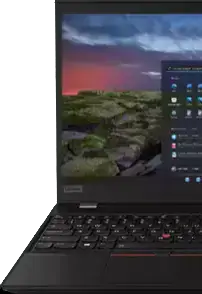What is a network file system?
Network File System (NFS) is a protocol that allows you to access and manage files over a network as easily as accessing local storage. It is commonly used in Linux® and UNIX environments and enables seamless file sharing across different systems by using a server-client model.
How does the network file system work?
Network File System works by using a client to request access to a file or directory from an NFS server. The server then processes the request, granting permissions and enabling the client to read or write to the file, depending on the access controls in place.
Can I use network file system with Windows?
Yes, you can use the network file system (NFS) with Windows. Although NFS is natively integrated into Unix and Linux® systems, Windows also supports NFS through optional components, enabling you to mount NFS shares and interact with them as you would with network drives.
What are the benefits of using NFS?
Using NFS (network file system) offers several benefits, including centralized data management, easy file sharing, and reduced storage redundancy. With NFS, you can access and manage files from multiple devices without duplicating data, which saves storage space and simplifies backups. Additionally, it enables collaborative work by providing shared access to files across the network.
How secure is the network file system?
Network File System includes several security features such as user authentication and access controls. You can also enhance its security by implementing additional measures like encryption and using secure tunneling techniques to ensure safe data transmission across your network.
Does network file system affect performance?
Network File System (NFS) can affect performance, particularly over slower networks. However, modern implementations of NFS come with performance enhancements and optimization features to mitigate latency and improve data transfer speeds. Fine-tuning NFS settings can also enhance performance.
Can I tweak network file system settings for better performance?
Yes, you can tweak various network file system (NFS) settings to improve performance. Adjusting parameters like read and write sizes, caching mechanisms, and network configurations can optimize your NFS environment for better speed and efficiency.
Is the network file system suitable for critical applications?
Network File System is suitable for a variety of applications, including critical ones, thanks to its robust design and reliability. However, for mission-critical applications where downtime is not acceptable, combining NFS with other high-availability solutions is advisable.
Can network file system handle large files?
Yes, the network file system can handle large files. This capability is especially useful in environments that deal with substantial amounts of data, such as media production or scientific research, where large file transfers are commonplace.
What is the difference between NFSv3 and NFSv4?
NFSv3 (Network File System version 3) and NFSv4 (Network File System version 4) are different versions of the NFS protocol, with NFSv4 offering several improvements over NFSv3. NFSv4 includes better security features, improved performance, and enhanced support for complex file operations. Unlike NFSv3, which requires additional protocols for certain functions, NFSv4 consolidates these features into a single protocol, simplifying configuration and management.
How do I mount a network file system share?
To mount a network file system share, you typically issue a command on your client machine specifying the server address and the directory you wish to mount. In Unix-based systems, this process often involves the `mount` command and editing the `/etc/fstab` file for persistent configurations.
Can I use the network file system over the internet?
While network file system is primarily designed for use over local networks, you can use it over the internet with additional security measures in place, such as VPNs (virtual private networks) or SSH (Secure Shell) tunnels, to safeguard data transmission from external threats.
What are the differences between NFS versions?
Network File System has evolved through various versions, each offering improvements in performance, security, and functionality. NFSv4 (Network File System version 4), for instance, provides better security features and stateful protocol support compared to its predecessors, making it more suitable for modern computing environments.
What is the maximum file size supported by network file system?
The maximum file size supported by the network file system depends on the version and underlying file system used. Modern implementations of NFSv4 (Network File System version 4) support exceptionally large files, often determined by the constraints of the hosting server’s file system.
Can I manage network file system using a graphical interface?
Yes, you can manage network file system using a graphical interface on many modern operating systems. Tools and applications are available that provide user-friendly interfaces for configuring and monitoring NFS (Network File System) shares, making it accessible even to those unfamiliar with command-line operations.
Do I need special hardware to use the network file system?
You do not need special hardware to use the network file system. Any standard server or computer with network connectivity and compatible operating system software can function as an NFS (Network File System) server or client, making it a versatile and cost-effective solution.
How do I ensure high availability with network file system?
To ensure high availability with network file systems, you can implement techniques such as server redundancy, failover clustering, and distributed file systems. These methods provide continuous access to NFS (Network File System) shares even in server failures or network disruptions.
Can I encrypt data transmitted over network file system?
Yes, you can encrypt data transmitted over network file system. Although NFS (Network File System) itself does not have built-in encryption, you can use secure protocols like Kerberos for authentication and tunneling options like SSH (Secure Shell) or VPNs (virtual private networks) to encrypt the data in transit.
Can I automate tasks using the network file system?
Yes, you can automate tasks using the network file system. Scripts and automation tools can help manage NFS (Network File System) shares, perform regular backups, or synchronize data across multiple servers, streamlining administrative tasks and improving efficiency.
Can I use NFS on different operating systems?
Yes, NFS is compatible with various operating systems, including Linux®, Windows, and Unix. You can set up NFS to work across different platforms, allowing seamless file sharing between different systems. This cross-platform compatibility makes NFS a versatile choice for heterogeneous environments.
What operating systems support NFS?
Network File System (NFS) is widely supported across various operating systems, including Linux®, UNIX, and Windows. This broad compatibility allows for flexible integration into heterogeneous network environments where different systems need to share and access files seamlessly.
How does the network file system handle file locking?
The network file system handles file locking through advisory locks, which inform other processes that a file is in use. This mechanism helps prevent concurrent access issues and ensures data integrity. NFSv4 (Network File System version 4) specifically provides improved file locking capabilities compared to earlier versions, making it more reliable for applications requiring robust file access control.
Can I use network file system for streaming media?
Yes, you can use network file system for streaming media. NFS's (Network File System) ability to handle large files and its performance optimizations make it suitable for streaming audio and video content. However, network bandwidth and latency should be considered to ensure smooth playback and avoid buffering.






